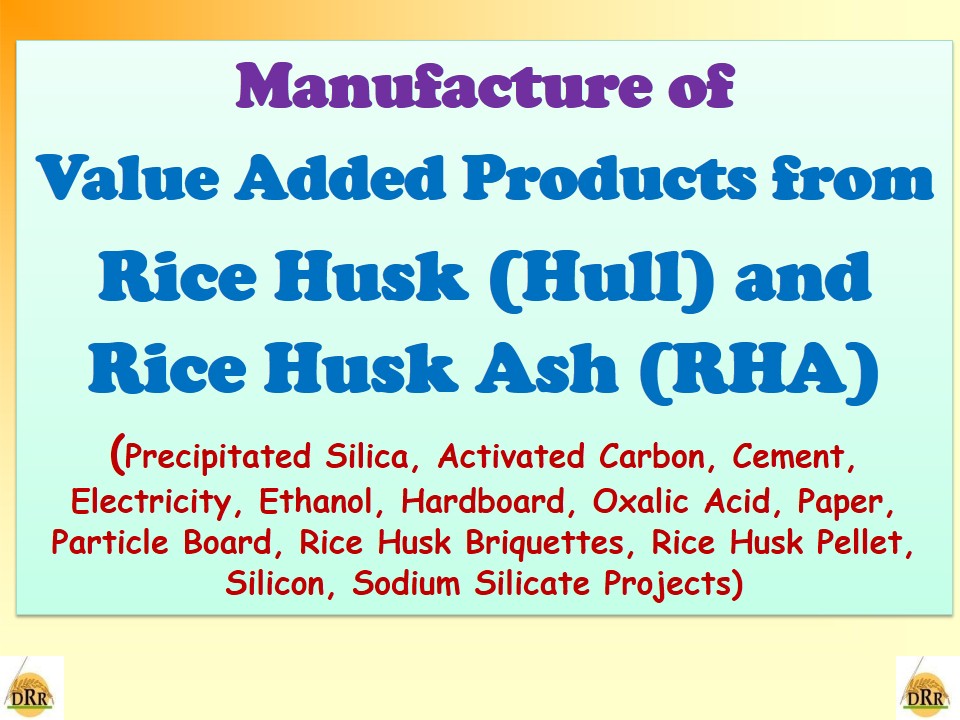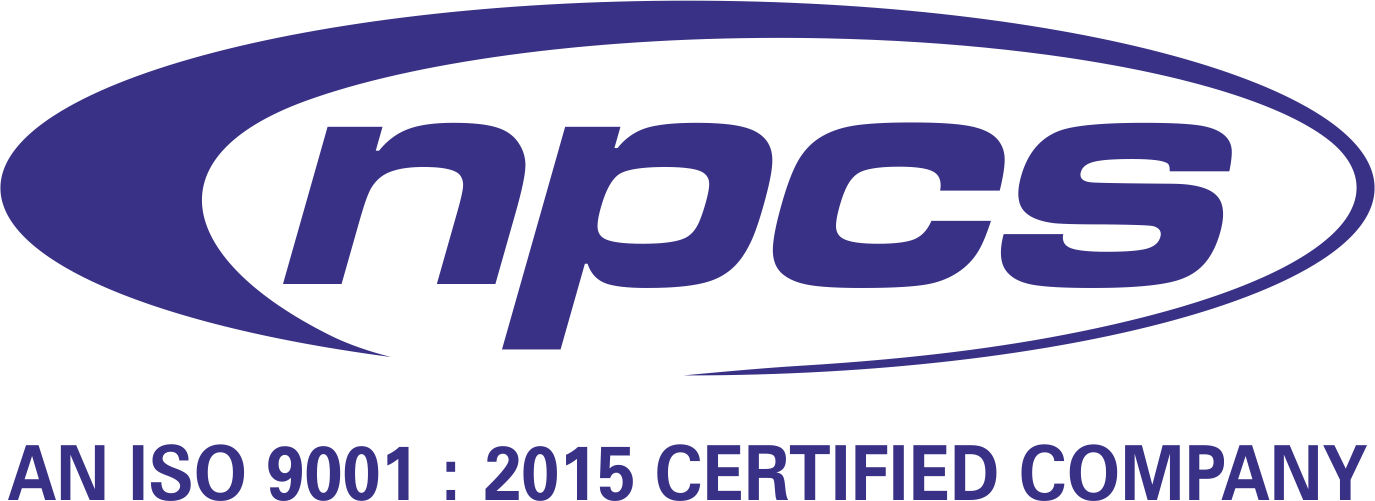
Rice hulls (or rice husks) are the hard protecting coverings of grains of rice. In addition to protecting rice during the growing season, rice hulls can be put to use as building material, fertilizer, insulation material, or fuel. Rice hulls are the coatings of seeds, or grains, of rice. The husk protects the seed during the growing season, since it is formed from hard materials, including opaline silica and lignin. The hull is mostly indigestible to humans.
India is a major rice producing country, and the husk generated during milling is mostly used as a fuel in the boilers for processing paddy, producing energy through direct combustion and / or by gasification. This RHA is a great environment threat causing damage to the land and the surrounding area in which it is dumped. Lots of ways are being thought of for disposing them by making commercial use of this RHA. Rice husk is an agriculture residue abundantly available in rice producing countries. Global production of rice is approximately 580 million tons a year, and this is rising as the world population and the consumption of rice increases. Rice husk is generally not recommended as cattle feed since its cellulose and other sugar contents are low. Furfural and rice bran oil are extracted from rice husk. Industries use rice husk as fuel in boiler and for power generation. Among the different types of biomass used for power generation, rice husk has a high ash content varying from 18 – 20%, silica is the major constituent of rice husk ash.
Rice husk ash (RHA) is a by-product from the burning of rice husk that can have favorable effects on the soil in terms of acidity correction. The burning of rice husk for power generation in industries has generated a new residue consisting of a mixture of ash, charred hull and fresh rice husk fractions.
Rice husk is a potential material; there are many usage of rice husk either in the raw form or in ash form. Most of the time husk from the mill is either burnt or dumped as waste in open fields and a small amount is used as fuel for boilers, electricity generation, bulking agents for composting of animal manure, etc.
Use of rice husk ash with cement improves workability and stability of the concrete mixture. It reduces heat generation, thermal cracking, and plastic shrinkage of the material. It also helps in increasing strength, impermeability, and durability of the mixture during the setting period by modifying the pore-structure and blocking the large voids in the hydrated cement paste through pozzolanic reaction. The properties of rice husk ash improves the performance of cement, bricks, and other construction materials. Increasing demand for rice husk ash in the building & construction application segment is one of the major factors fueling the growth of the overall rice husk ash market.
The global rice husk ash market is projected to reach USD 2.42 Billion by 2020, at a CAGR of 5.15% from 2015 to 2020.
Rice husk is the outermost layer of protection encasing a rice grain. Rice husk was largely considered a waste product that was often burned or dumped on landfills. Many ways are being thought for disposal of rice husk and only a small quantity of rice husk is used in agricultural field as a fertilizer, or as bedding and for stabilisation of soils. Therefore, the use of rice husk as rice husk ash is one of the most viable solution. The husk can be used for poultry farming, composting or burning. In the case of burning, it has been used as biomass to power reactors to generate thermal or electrical energy. India is a major rice producing country and the husk generated during milling is mostly used as a fuel in the boilers for processing paddy, producing energy through direct combustion and / or by gasification.
The rice husk ash causes more environmental pollution and its disposal becomes a problem, hence requires attention regarding its disposal and its reuse. The ash is mainly composed of carbon and silica due to which it is used to manufacture different value added products. This book provides thorough information to utilize RHA with process pathway for economically valuable products.
This handbook explains manufacturing process with flow diagrams of various value added products from rice husk & rice husk ash, photographs of plant & machinery with supplier’s contact details and sample plant layout & process flow sheets. The major contents of the book are rice husk, rice husk ash (RHA), precipitated silica from rice husk ash, activated carbon from rice husk, cement from rice husk ash, electricity from rice husk, ethanol from rice husk, hardboard from rice husk, oxalic acid from rice husk, paper from rice husk, particle board from rice husk, rice husk briquettes, rice husk pellet, silicon from rice husk, sodium silicate from rice husk, packaging.
This book will be a mile stone for the entrepreneurs, existing units, professionals, libraries and others interested in recovery of value added products from rice husk (rice hull) & rice husk ash to explore an economic way for recycle and reuse of agricultural waste.
See more
Contact us
Niir Project Consultancy Services
106-E, Kamla Nagar, Opp. Spark Mall,
New Delhi-110007, India.
Email: npcs.ei@gmail.com , info@entrepreneurindia.co
Tel: +91-11-23843955, 23845654, 23845886, 8800733955
Mobile: +91-9811043595
Fax: +91-11-23841561
Website : www.entrepreneurindia.co , www.niir.org
Tags
Activated Carbon from Rice Husk, agro waste processing Business, best small and cottage scale industries, Biomass Resources from Rice Industry, Charcoal from Rice Husk, Creating commerce out of rice husks, Electricity from Rice Husk, Energy from rice husks, Ethanol from Rice Husk, extraction of precipitated silica from rice husk ash, Extraction of Silica and other related products from Rice Husk, Get started in small-scale Rice Husk based products manufacturing, Hardboard from Rice Husk, High Purity Silicon from Rice Husks, How to make rice husk ash, How to Manufacture Rice Husk based Products, How to Start a Rice Husk Production Business, How to start a successful agro waste processing business, How to Start Rice Husk Ash based Processing Industry in India, Manufacture of Value Added Products from Rice Husk (Hull), Manufacture of Value Added Products from Rice Husk Ash (RHA), modern small and cottage scale industries, Most Profitable Rice waste Processing Business Ideas, new small scale ideas in Rice husk products industry, Oxalic Acid from Rice Husk, Paper from Rice Husk, Particleboards from Rice Husk, Precipitated Silica from Rice Husk, process technology book on rice husk ash, Production of high quality rice husk ash, Products from Rice Husk, Profitable Small Scale Manufacturing of Rice Husk based products, Reactivity of rice husk ash, Recovery of value added products from rice husk ash, Rice Hull, Rice hull-derived silica, Rice Husk – A Useful By-Product for Rice Growing Countries, Rice Husk Ash based products Processing Industry in India, Rice Husk Ash Cement, Rice husk ash fuel to wealth, Rice Husk Ash in Concrete: The use of rice husk ash, rice husk ash manufacturing process, rice husk ash production process, Rice husk ash uses, Rice Husk Ash, Rice Husk based products Small Business Manufacturing, Rice Husk Briquettes, Rice Husk Briquetting Plant, Rice Husk Pellet, Rice husk properties, Rice Husk Technology, Rice milling waste, Rice waste products, Setting up and opening your agro waste processing Business, Silica Products from Rice Hulls, Silicon from Rice Husk, Small scale Commercial agro waste processing business, Small Scale Rice Husk Ash based products Processing, Sodium Silicate from Rice Husk, Starting a Rice Husk Ash based products Processing Business, Technical and Economic Analysis of a Power Plant Based on Rice Husk, Use of rice husk, Uses of rice husk powder, Utilization of Rice Husk and Their Ash, What is rice husk ash?
Contact Form
[contact-form][contact-field label=’Name’ type=’name’ required=’1’/][contact-field label=’Email’ type=’email’ required=’1’/][contact-field label=’Country’ type=’text’ required=’1’/][contact-field label=’Mobile’ type=’text’/][contact-field label=’Website’ type=’url’/][contact-field label=’Comment’ type=’textarea’ required=’1’/][/contact-form]





